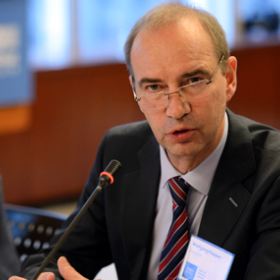
Glimmers of Hope for A Greener Future
The U.N. Framework Convention on Climate Change 21st Conference of the Parties, or COP21, was a tough act to follow. At that event in 2015, delegates from 195 countries came together in Paris and adopted a landmark agreement to address climate change. The accord, known as the Paris Agreement, laid out the signatories' intention to limit global warming to less than 2 degrees Celsius (and, ideally, well under that mark) by curbing greenhouse gas emissions and decarbonizing the global economy by 2060. Two years later, however, it's becoming increasingly clear that fulfilling the accord's objectives won't be enough to halt the effects of global warming. What's more, though COP21 established an ambitious plan for addressing climate change, it left hashing out the details for another year, another conference.
Expectations were high that this year's 23rd Conference of the Parties, or COP23, would offer the perfect venue for fleshing out the Paris Agreement. The summit, which Fiji presided over, drew 22,000 people from all over the world to Bonn, Germany, on Nov. 6-17 to hash out the next steps toward addressing climate change. COP23 lacked the fanfare of COP21, and some critics argued that its participants failed to take any meaningful action over the course of the meeting. On the conference's conclusion, the main takeaway was that climate change is still a top priority for policymakers, economists and voters worldwide. But that message, and the decisions that came out of COP23, nonetheless represented an achievement in the international fight against climate change.
Click to read the full commentary on Stratfor.
Photo: "Harnessing Nature" (CC BY-NC-ND 2.0) by tommyscapes

